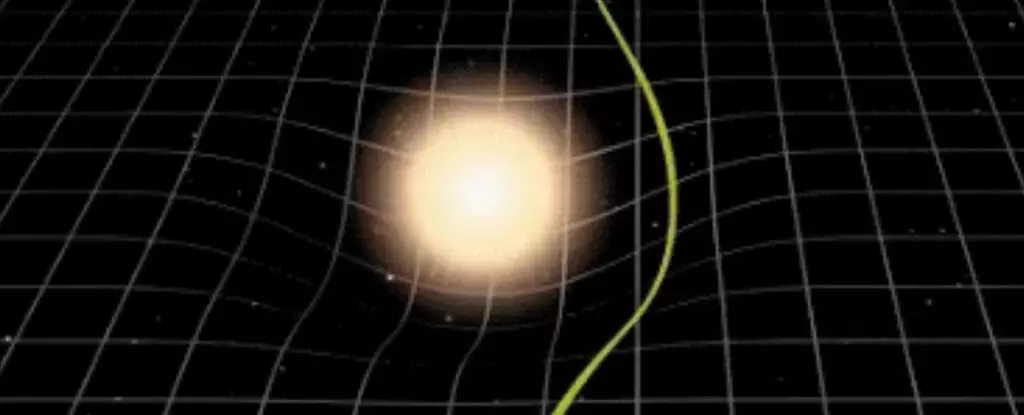In a world where concerns about potential asteroid impacts on Earth loom large, recent advancements in astrophysics bring a glimmer of hope. A new equation proposed by physicist Oscar del Barco Novillo from the University of Murcia, Spain, addresses one of the longstanding challenges in celestial mechanics: the gravitational bending of light (GBL). This innovative equation promises to enhance our ability to predict and track the path of objects in space, such as asteroids and comets, potentially giving humanity the crucial head start needed to respond to cosmic threats.
Gravitational bending of light stems from the fundamental principles of Einstein’s General Relativity, indicating that massive objects like the Sun warp spacetime, causing light traveling nearby to deviate from its straight path. For decades, scientists have studied this phenomenon to not only deepen our understanding of the universe but also to refine our calculations of celestial object positions. Del Barco Novillo’s work marks a significant leap—instead of merely building upon prior formulas, he introduces a new framework that enhances accuracy in determining the GBL angle.
His equation incorporates finite distances rather than assuming infinite ones, a shift that yields more precise results. Such improvements are paramount for astronomers who seek to measure the positions and orbits of distant celestial bodies. By understanding exactly how light interacts with the gravity of our solar system’s bodies, we can potentially avert disasters caused by rogue asteroids that might otherwise go unnoticed until it’s too late.
The ramifications of this novel equation are vast. Del Barco Novillo asserts that the implications extend beyond simply identifying asteroid trajectories. With higher accuracy measurements, scientists could better position stars and even track challenging astronomical phenomena. The equation’s application could streamline research in various fields, including celestial mechanics and stellar dynamics, making it a valuable tool for astronomers worldwide.
Furthermore, it opens the door to more efficiently locating Proxima Centauri and contributing to ongoing missions like the European Space Agency’s Euclid mission. The Euclid mission aims to delve into the mysteries of dark matter, charting the positions of billions of galaxies across the cosmos. A more precise approach to measuring light bending could assist in refining the data collected from these astronomical surveys, leading to groundbreaking discoveries.
Del Barco Novillo’s methodology is noteworthy for its material medium approach, utilizing concepts often applied in terrestrial physics to celestial scenarios. This comparative analysis provides a fresh perspective on GBL, akin to how light refracts when passing through different mediums, like water. By solving these complex light interactions, he ultimately verified the new equation through rigorous numerical simulations, confirming its accuracy against historical benchmarks.
This comprehensive validation process underscores the reliability of his work and points to a new era in astrophysics. As celestial mechanics become increasingly intricate, the ability to fine-tune our calculations with mathematical precision is invaluable.
The new equation developed by Oscar del Barco Novillo represents a significant advancement in our understanding of the gravitational bending of light. As researchers and astronomers continue to unravel the mysteries of space, the ability to track and predict the movement of potentially dangerous celestial objects is crucial. The equation not only arms us with the tools to identify immediate threats but also enriches our overall knowledge of cosmic phenomena, positioning physicists to glean deeper insights into the vast universe beyond our planet. The continuous evolution of astronomical science gives hope that, through collaboration and innovation, humanity can face the cosmos with newfound knowledge and preparedness.


Leave a Reply